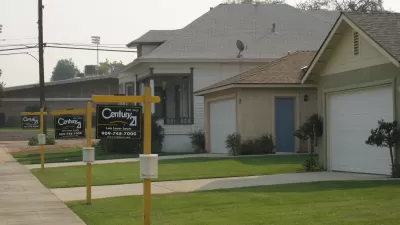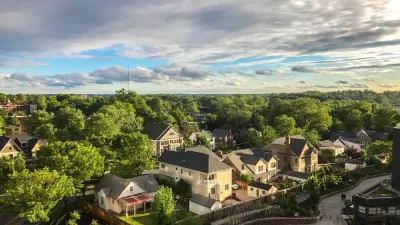The housing prices that define the most expensive metropolitan areas in the country—think San Francisco, New York, and Los Angeles—have gone national.

"[O]ne impact of the pandemic appears to be far more metropolitan areas where the real estate market looks increasingly like San Francisco’s," according to an article by Kellie Hwang for the San Francisco Chronicle [paywall].
Hwang is sharing a recent analysis by the Chronicle that used Zillow data to catalogue the U.S. metropolitan areas experiencing "significant increases in home values and decreasing housing inventory over the pandemic."
"In our data analysis, we narrowed down the list to areas where home values rose 40% or more from Jan. 2020 to Jan. 2022, inventory from the same time period fell by 40% or more, and inventory is now at two homes or fewer per 1,000 people," explains Hwang.
“Two years into the pandemic, the U.S. housing market is virtually unrecognizable from before, with nearly half the number of homes for sale, prices a third higher and rising.” -Zillow spokesperson Tyrone Law
"What we found was a mix of both large and smaller metro areas whose housing markets have become less affordable and scarcer over the past two years."
The list might surprise: Missoula, Montana; Port Angeles, Washington; Provo, Utah; Oak Harbor, Washington; Salt Lake City, Utah; Raleigh, North Carolina; Merced, California; San Diego, California; Bellingham, Washington; and Helena Montana.
FULL STORY: 10 real estate markets on the cusp of a San Francisco-style affordability crisis

Alabama: Trump Terminates Settlements for Black Communities Harmed By Raw Sewage
Trump deemed the landmark civil rights agreement “illegal DEI and environmental justice policy.”

Study: Maui’s Plan to Convert Vacation Rentals to Long-Term Housing Could Cause Nearly $1 Billion Economic Loss
The plan would reduce visitor accommodation by 25% resulting in 1,900 jobs lost.

Why Should We Subsidize Public Transportation?
Many public transit agencies face financial stress due to rising costs, declining fare revenue, and declining subsidies. Transit advocates must provide a strong business case for increasing public transit funding.

Wind Energy on the Rise Despite Federal Policy Reversal
The Trump administration is revoking federal support for renewable energy, but demand for new projects continues unabated.

Passengers Flock to Caltrain After Electrification
The new electric trains are running faster and more reliably, leading to strong ridership growth on the Bay Area rail system.

Texas Churches Rally Behind ‘Yes in God’s Back Yard’ Legislation
Religious leaders want the state to reduce zoning regulations to streamline leasing church-owned land to housing developers.
Urban Design for Planners 1: Software Tools
This six-course series explores essential urban design concepts using open source software and equips planners with the tools they need to participate fully in the urban design process.
Planning for Universal Design
Learn the tools for implementing Universal Design in planning regulations.
Caltrans
Smith Gee Studio
Institute for Housing and Urban Development Studies (IHS)
City of Grandview
Harvard GSD Executive Education
Toledo-Lucas County Plan Commissions
Salt Lake City
NYU Wagner Graduate School of Public Service





























